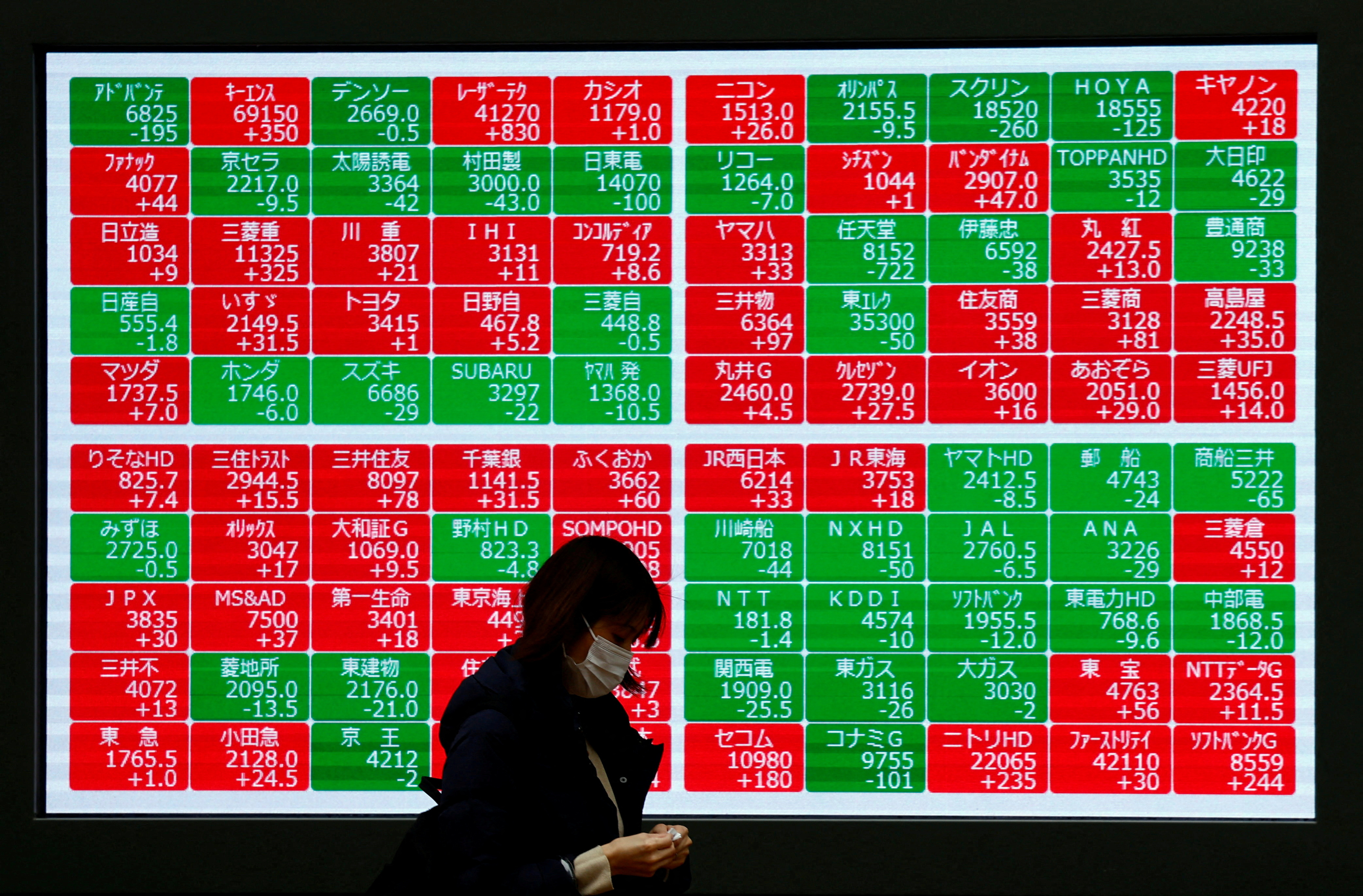Report on Trade Liberalization for Emerging and Developing Economies in the Context of the Sustainable Development Goals
Issue Date: July 11, 2025
Executive Summary
This report analyzes the critical need for Emerging and Developing Economies (EDEs) to reinforce their commitment to trade liberalization amidst rising global protectionism. An unpredictable and restrictive US trade policy threatens to undermine the progress of EDEs toward achieving the Sustainable Development Goals (SDGs), particularly those related to economic growth, poverty reduction, and global partnerships. In response, EDEs should resist protectionist temptations and instead pursue deeper international trade and financial integration. By strengthening macroeconomic fundamentals and creating an attractive environment for foreign investment, EDEs can leverage global supply chain diversification to advance their sustainable development agenda.
Impact of Protectionist Measures on SDG Attainment
Restrictive trade policies enacted by major economies have multifaceted negative consequences for EDEs, directly impeding their ability to meet key SDG targets.
Economic and Financial Destabilization
- Undermining SDG 8 (Decent Work and Economic Growth): Higher tariffs on EDE exports reduce foreign-currency revenues, lower corporate profit margins, and limit the capacity for investment. This directly curtails economic growth and the creation of decent work.
- Threatening SDG 1 (No Poverty): Reduced economic growth and pressure on commodity prices, upon which many developing economies depend, threaten to reverse gains in poverty reduction.
- Jeopardizing SDG 9 (Industry, Innovation, and Infrastructure): Trade tensions can lead to higher global interest rates and increased investor risk aversion, diminishing the ability of EDEs to finance critical infrastructure and industrial projects.
- Exacerbating SDG 10 (Reduced Inequalities): The weakening of the multilateral trade regime makes smaller, trade-dependent economies more vulnerable to economic coercion by larger countries, increasing inequality between nations.
- Creating Financial Instability: A stronger US dollar resulting from protectionist measures can increase the local-currency cost of debt servicing for EDEs, creating financial distress at a time when export revenues are already under pressure. This instability hinders the allocation of resources to all SDGs.
- Limiting Long-Term Development: Reduced access to major consumer markets obstructs the export-led growth strategies that have historically enabled countries to advance technologically and move up the value-added ladder, impacting long-term progress on SDG 8 and SDG 9.
Strategic Imperative: Trade Liberalization as a Tool for Sustainable Development
Faced with external economic pressures, EDEs should strategically pursue greater trade openness. Adopting retaliatory protectionist measures is counterproductive and misaligned with long-term development objectives.
The Limited Utility of Protectionism for EDEs
- Restriction: While historically part of some industrialization strategies, import restrictions in the modern context often fail due to state capture and rent-seeking, ultimately hindering the efficiency gains needed to drive progress on SDG 9.
- Reciprocity: The bargaining power of most EDEs is too limited to use tariffs as a tool to gain significant market access from major economies like the US, EU, or China. This approach offers little benefit for advancing SDG 17 (Partnerships for the Goals).
- Revenue: While tariffs are an important revenue source for many developing countries, a gradual, phased-in liberalization strategy, accompanied by domestic tax reform, can manage the fiscal impact while unlocking the broader economic benefits of free trade that support all SDGs.
Policy Recommendations for Aligning Trade with the SDGs
To mitigate risks and seize opportunities, EDEs should adopt a multi-pronged strategy focused on strengthening domestic resilience and proactively deepening global integration.
1. Enhance Domestic Resilience and Governance
- Strengthen Macroeconomic Governance: Establish independent central banks and rule-based fiscal policies to maintain stability and create the fiscal space needed to absorb external shocks. This directly supports the creation of strong institutions under SDG 16.
- Fortify External Financial Positions: Reduce foreign-currency liabilities to enable a more flexible exchange-rate regime, which can better absorb trade-related shocks without causing broad economic destabilization, thereby safeguarding development financing.
2. Pursue Proactive Global Integration
- Advance Trade Liberalization: Pursue reciprocal or, if necessary, unilateral tariff reductions to increase domestic competition, generate efficiency gains, and boost productivity, contributing directly to SDG 8 and SDG 9.
- Diversify Export Markets: Prioritize trade agreements with a wide range of large economies to reduce vulnerability to any single country’s policies, a core principle of building robust global partnerships under SDG 17.
- Align Regulatory Policies: Harmonize domestic regulations with major trading partners to reduce non-tariff barriers, facilitating deeper integration into global markets and strengthening partnerships as envisioned in SDG 17.
- Attract Foreign Direct Investment (FDI): Create a favorable investment climate through structural reforms and infrastructure investment to capitalize on the reengineering of global supply chains. This fosters technology transfer and innovation (SDG 9) and provides stable financing for development.
- Champion Multilateralism: Lend strong diplomatic support to preserving the rules-based international trade regime. A functioning multilateral system is essential for protecting smaller economies and ensuring an equitable path toward achieving SDG 10 and SDG 17.
Analysis of Sustainable Development Goals in the Article
1. Which SDGs are addressed or connected to the issues highlighted in the article?
The article on trade liberalization for developing and emerging economies (EDEs) connects to several Sustainable Development Goals by focusing on economic growth, international trade policies, and financial stability.
- SDG 8: Decent Work and Economic Growth: The article’s central theme is how trade policies impact the “economic growth” and “development” of EDEs. It discusses how protectionism can lead to “lower economic growth,” while trade liberalization can generate “efficiency gains, and increase productivity.”
- SDG 17: Partnerships for the Goals: This goal is directly addressed through the extensive discussion on international trade. The article critiques protectionism, advocates for a “multilateral international trade regime,” and urges EDEs to pursue “reciprocal trade liberalization” and diversify export markets.
- SDG 9: Industry, Innovation and Infrastructure: The article touches upon this goal by recommending that EDEs “attract foreign investment,” facilitate “integration into global value chains,” foster “technology transfer and innovation,” and pursue “infrastructure investment” to become more competitive.
- SDG 10: Reduced Inequalities: The article implicitly addresses this goal by highlighting the disproportionate negative impact of protectionist policies on “smaller, relatively more trade-dependent economies.” It notes that the weakening of the multilateral trade system makes these economies “more susceptible to geoeconomic coercion” by larger countries, thus exacerbating inequalities between nations.
2. What specific targets under those SDGs can be identified based on the article’s content?
Several specific targets can be identified based on the policy recommendations and challenges discussed in the article.
- Under SDG 8 (Decent Work and Economic Growth):
- Target 8.1: “Sustain per capita economic growth in accordance with national circumstances and, in particular, at least 7 per cent gross domestic product growth per annum in the least developed countries.” The article directly relates trade policies to economic growth, stating that protectionism limits “longer-term growth potential” and that liberalization can enhance it.
- Target 8.2: “Achieve higher levels of economic productivity through diversification, technological upgrading and innovation…” The article supports this by suggesting that access to overseas markets helps countries “move up the technological, value-added ladder” and that attracting investment can “foster technology transfer and innovation.”
- Target 8.a: “Increase Aid for Trade support for developing countries…” The article’s core argument for preserving the “multilateral trade regime” and promoting trade liberalization aligns with the spirit of this target, which aims to help developing countries use trade for economic growth.
- Under SDG 17 (Partnerships for the Goals):
- Target 17.10: “Promote a universal, rules-based, open, non-discriminatory and equitable multilateral trading system…” This is a central point of the article, which laments the “weakening of the international trade regime” and urges EDEs to “support diplomatic efforts to preserve the multilateral trade regime.”
- Target 17.11: “Significantly increase the exports of developing countries…” The article highlights that US tariffs “will hurt EDE exports” and cause “reduced exports,” directly linking protectionism to a decline in this area.
- Target 17.5: “Adopt and implement investment promotion regimes for least developed countries.” The article explicitly advises EDEs to “create an attractive investment environment for foreign companies” and attract “more stable foreign direct investment.”
- Under SDG 9 (Industry, Innovation and Infrastructure):
- Target 9.a: “Facilitate sustainable and resilient infrastructure development in developing countries through enhanced financial, technological and technical support…” The article mentions “infrastructure investment” as a key component of creating an attractive environment for foreign companies.
- Target 9.b: “Support domestic technology development, research and innovation in developing countries…” This is supported by the article’s point that trade integration helps countries “move up the technological, value-added ladder” and that attracting FDI can “foster technology transfer and innovation.”
- Under SDG 10 (Reduced Inequalities):
- Target 10.a: “Implement the principle of special and differential treatment for developing countries… in accordance with World Trade Organization agreements.” The article supports this by arguing that the “multilateral international trade regime helps limit the vulnerability of smaller, relatively more trade-dependent economies to economic coercion by larger” ones.
- Target 10.b: “Encourage official development assistance and financial flows, including foreign direct investment, to States where the need is greatest…” The article’s call for EDEs to attract “foreign direct investment” aligns directly with this target.
3. Are there any indicators mentioned or implied in the article that can be used to measure progress towards the identified targets?
Yes, the article mentions or implies several economic and financial indicators that can be used to measure progress.
- Tariff Rates: The article is centered on the impact of “higher US tariffs” and advocates for EDEs to “lower tariffs on imports” through “gradual, unilateral trade liberalization.” The level of tariffs is a direct indicator for Target 17.10.
- Export Volumes and Revenues: The text explicitly mentions that protectionism leads to “reduced exports,” “lower export volumes,” and “lower foreign-currency revenues.” These are direct measures for Target 17.11.
- Economic Growth Rate: The article repeatedly links trade policy to “lower economic growth” or “longer-term growth potential,” making GDP growth a key indicator for Target 8.1.
- Foreign Direct Investment (FDI): The article recommends attracting “foreign direct investment” as a stable source of financing. FDI inflows are a clear indicator for Targets 17.5 and 10.b.
- Government Debt and Deficit Levels: As part of strengthening macroeconomic resilience, the article advises EDEs to “keep debt at manageable levels” and limit the ability “to run large deficits.” These are indicators of fiscal stability.
- Inflation and Interest Rates: The article notes that US tariffs could lead to “higher US inflation” and “keep US interest rates higher for longer,” affecting financing costs for EDEs. These are key macroeconomic stability indicators.
- Exchange Rate Flexibility: The recommendation to “move toward a flexible exchange-rate regime” implies that the type of exchange rate regime and its stability are relevant indicators for an economy’s resilience to external shocks.
4. Summary Table of SDGs, Targets, and Indicators
| SDGs | Targets | Indicators Identified in the Article |
|---|---|---|
| SDG 8: Decent Work and Economic Growth |
8.1: Sustain per capita economic growth. 8.2: Achieve higher levels of economic productivity and innovation. 8.a: Increase Aid for Trade support. |
– Economic growth rates – Productivity levels – Rate of technology transfer and innovation |
| SDG 9: Industry, Innovation and Infrastructure |
9.a: Facilitate resilient infrastructure development. 9.b: Support domestic technology development and innovation. |
– Level of infrastructure investment – Integration into global value chains – Rate of technology transfer |
| SDG 10: Reduced Inequalities |
10.a: Implement special and differential treatment for developing countries in trade. 10.b: Encourage financial flows, including FDI, to states where need is greatest. |
– Adherence to WTO principles for developing countries – Volume of Foreign Direct Investment (FDI) inflows |
| SDG 17: Partnerships for the Goals |
17.5: Adopt investment promotion regimes. 17.10: Promote a universal, rules-based, multilateral trading system. 17.11: Significantly increase the exports of developing countries. |
– Average tariff rates – Export volumes and revenues – Volume of Foreign Direct Investment (FDI) inflows – Number of trade restrictions/liberalization agreements |
Source: atlanticcouncil.org







